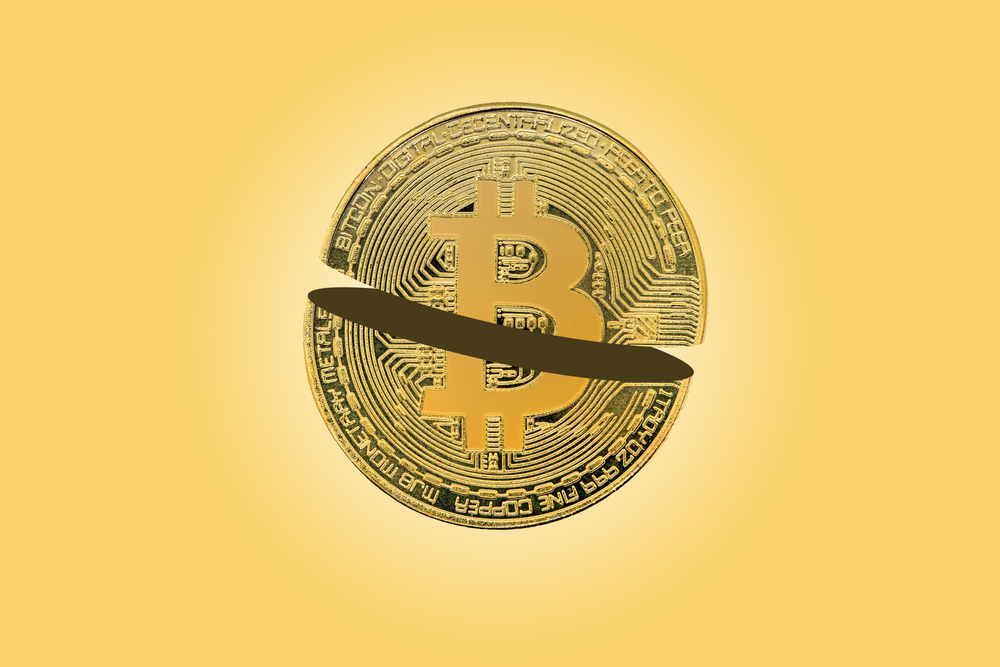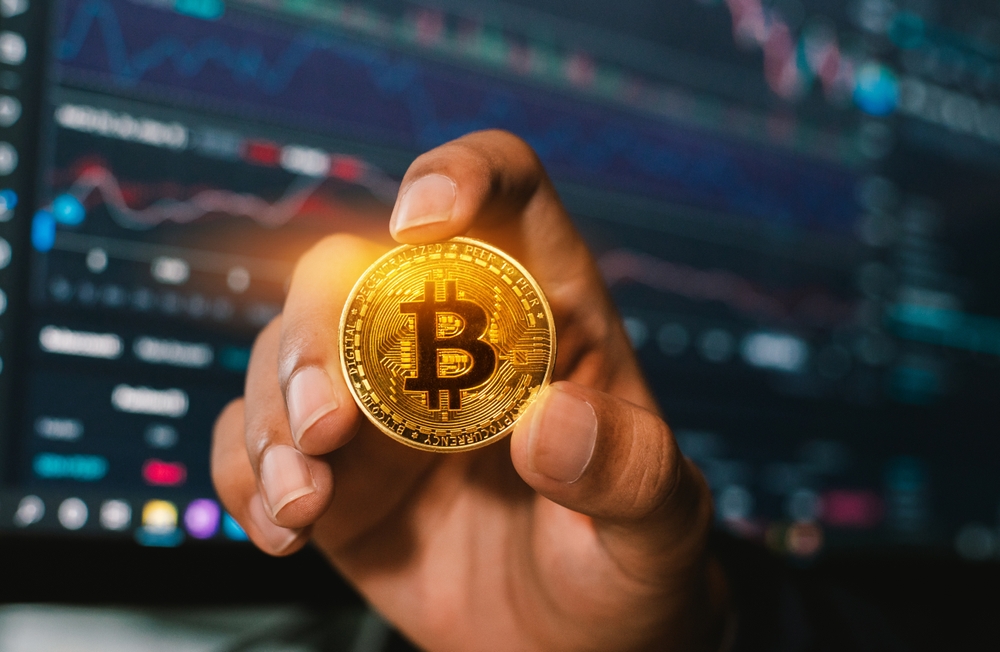Bitcoin Halving Impact

Bitcoin halvings come with a mix of challenges and opportunities that can leave investors feeling both excited and anxious. When miner rewards are cut in half, profitability can take a hit; this often means some mining operations shut down, reducing network security and potentially leading to longer transaction times and higher fees. Market volatility spikes, historically leading to wild price swings that require a strong stomach. Investors can be prone to panic selling or FOMO buying, further amplifying the turbulence. Yet, there’s a silver lining—past halvings have usually been followed by substantial price gains, turning these tumultuous times into potentially profitable opportunities. If you understand the emotional and market dynamics at play, you can prepare effectively and make savvy investment decisions during these crucial periods.
The Challenges of Bitcoin Halving

Understanding the potential ups and downs
Consequences of Reduced Miner Rewards
One of the primary challenges with Bitcoin halving is the immediate reduction in miner rewards. When the reward for mining blocks is cut in half, it can make the entire mining process less profitable. Here’s how this might affect you:
- Mining: With lower rewards, some miners may shut down their operations, especially if they’re operating on high-cost equipment. This can lead to reduced network security.
- Transactions: Fewer miners could result in longer transaction times and higher fees due to decreased processing power.
A study by Coin Metrics revealed that past halving events led to significant drops in hash rates, indicating a temporary lull in mining activities. This is something to be mindful of as it directly impacts transaction efficiency.
Market Volatility Concerns
Every halving event so far has had a notable impact on Bitcoin’s market volatility. The dramatic reduction in new Bitcoin supply usually stirs the market. Historically, we’ve seen price rallies followed by sharp corrections. These periods can be intense for investors.
According to data from Glassnode, after the 2020 halving, Bitcoin’s price soared but also experienced increased volatility. So, if you’re not a fan of roller-coaster rides, it’s crucial to be prepared for these swings.
Investor Anxiety
Uncertainty often follows significant events like Bitcoin halving. Investor anxiety can drive erratic market behavior. Some typical reactions include:
- Panic Selling: When prices start to fluctuate, some investors might rush to sell, fearing a massive drop.
- FOMO Buying: On the flip side, fear of missing out (FOMO) can lead to rushed buying, pushing prices even higher in the short term.
A survey by Luno found that over 60% of investors experience heightened anxiety during halving periods. Understanding this emotional aspect can better prepare you to avoid hasty decisions.
Promise of Gains
Despite the challenges, halving events have historically been followed by significant gains. Looking at past halvings, Bitcoin’s price has typically surged post-event. For example, after the 2012 halving, the price soared from $12 to over $1,000 within a year.
While historical performance isn’t a guarantee of future results, it’s a promising indicator. Many experts suggest that similar trends could follow future halvings, making it a potentially lucrative period for investors.
Curious about the details of how Bitcoin halving works and its historical impacts? Make sure to stick around for our upcoming post where we break down the halving process, its mechanics, and past trends.
Bitcoin Halving: What Is It?

Before you can grasp the impact of Bitcoin halving, it’s essential to understand the process itself. Bitcoin halving is a critical event that occurs approximately every four years, or more precisely, after every 210,000 blocks are mined.
Reducing Block Rewards
In simple terms, halving means cutting the block reward that miners receive by half. Initially, Bitcoin miners earned a reward of 50 BTC per block. The first halving in 2012 reduced this reward to 25 BTC, followed by further reductions to 12.5 BTC in 2016, and then to 6.25 BTC in 2020. Essentially, with each halving event, the supply of new Bitcoins decreases, making it a scarcer resource.
Supply and Demand Dynamics
Bitcoin’s limited supply is one of its most compelling features. The code underpinning Bitcoin is designed to cap the total number of Bitcoins at 21 million. When blocks are halved, the rate at which new coins enter the market is reduced. This shrinking supply, combined with increasing or steady demand, generally leads to a rise in Bitcoin’s value.
As the renowned economist Milton Friedman once said,
“Inflation is always and everywhere a monetary phenomenon.”
In Bitcoin’s case, the opposite holds true—the reduction in supply can lead to deflationary pressure, potentially driving the price up.
A Look at Past Halvings
The history of Bitcoin halvings provides valuable insights. During the first halving in 2012, Bitcoin’s price increased from around $11 to $1,000 over the next year. The 2016 halving saw a similar trend with Bitcoin’s price jumping from approximately $650 to $20,000 by the end of 2017. And the most recent halving in 2020 led Bitcoin to skyrocket from ~$9,000 to over $60,000 within a year.
Past halvings have consistently demonstrated that the reduction in Bitcoin supply has a substantial impact on its price. But what makes the next halving in 2024 so interesting? Could the upcoming halving be even more significant than its predecessors?
Stay tuned as we take a closer look at the historical price movements after past halvings and discuss what can we learn from them!
Historical Price Movements After Halvings

Let’s take a journey through the past to understand how Bitcoin halvings have influenced its market price. This isn’t just a history lesson; it’s a roadmap that helps us anticipate what might happen next. As Mark Twain famously said, “History doesn’t repeat itself, but it often rhymes.” Understanding these patterns can give you a significant edge.
2012 Halving
The first-ever Bitcoin halving happened in November 2012. Before this event, Bitcoin was relatively unknown, traded mostly among tech geeks and early adopters. But then, something incredible happened:
- In the weeks leading up to the halving, the price of Bitcoin surged from about $11 to $12.
- By the end of the year, Bitcoin had reached a remarkable $13.
- The real magic happened in the following year when Bitcoin skyrocketed to over $260 by April 2013, eventually peaking at around $1,000 in late 2013.
This halving laid the groundwork for Bitcoin’s first brush with mainstream recognition. Its impact? Market speculation fervor and a strong signal to enthusiasts that halvings are worth watching.
2016 Halving
The next halving occurred in July 2016. By then, Bitcoin had grown substantially in both market size and community awareness:
- In the months leading to the event, Bitcoin’s price jumped from roughly $430 to about $650.
- Shortly after the halving, the price remained relatively stable, hovering around $600-$700.
- It was in 2017 that Bitcoin experienced its most stunning rally, reaching nearly $20,000 by December.
This halving showed us that while immediate price gains might be modest, the long-term effect can be monumental. It paved the way for Bitcoin to cement its status as a viable asset class.
2020 Halving
The 2020 halving was much anticipated, taking place in May. The cryptocurrency market, more mature and efficient, provided interesting insights:
- Pre-halving, Bitcoin’s price saw a climb from approximately $8,600 to about $10,000.
- Post-halving, it maintained a steady rise, ending the year at around $29,000.
- By early 2021, it hadn’t just doubled but soared to over $60,000.
So, what did we learn here? Timing and market conditions matter immensely. By 2020, larger institutional investors began to view Bitcoin as digital gold, adding momentum that previous halvings couldn’t muster.
Curious about what’s next? The 2024 halving is just around the corner, and the question on everyone’s mind is: will history rhyme once more? Let’s see what the experts predict about the upcoming event.
The 2024 Halving: Predictions and Expectations

As we gear up for the 2024 Bitcoin halving, the excitement and speculation in the crypto community are palpable. With every halving event, we’re left wondering — will it lead to a massive price surge or are there risks we need to mitigate? Let’s explore what the experts are predicting and what we should keep an eye on.
Analyst Forecasts
You’ve probably seen various predictions from top cryptocurrency analysts about the upcoming halving. Some are incredibly bullish, expecting unprecedented price gains, while others are more cautious. For example, PlanB, the famous crypto analyst behind the Stock-to-Flow model, has suggested that Bitcoin could reach new all-time highs post-halving. On the other hand, some analysts warn of potential short-term volatility.
- PlanB’s Stock-to-Flow model: Predicts significant price increases based on historical data.
- Peter Brandt: Veteran trader who notes that historical patterns don’t guarantee future performance.
These varying perspectives remind us that while past trends can provide insights, the market can always throw a curveball.
Potential for Price Surge
The possibility of a price surge after the 2024 halving is perhaps the most exciting aspect for investors. Historically, Bitcoin has seen significant price increases following halving events. If you look back:
- After the 2012 halving, Bitcoin’s price surged from around $12 to over $1,000 by the end of 2013.
- The 2016 halving saw prices rise from about $650 to nearly $20,000 in December 2017.
- Post-2020 halving, prices skyrocketed from around $9,000 to an all-time high above $60,000 in 2021.
These historical gains fuel optimism that the 2024 halving could lead to similar, if not more substantial, price hikes. Factors contributing to potential price surges include:
- Decreased supply: With miner rewards halved, fewer new Bitcoins enter the market.
- Increased demand: As awareness and adoption of Bitcoin grow, more investors may enter the market.
- Institutional interest: More institutions are exploring Bitcoin, which can drive prices higher.
“Bull markets are born on pessimism, grown on skepticism, mature on optimism, and die on euphoria.” – John Templeton
This quote perfectly encapsulates the sentiment around Bitcoin halvings. While optimism abounds, it’s crucial to remain vigilant and not get carried away by euphoria.
Risks to Keep in Mind
Of course, with great potential for reward comes the need to understand the risks. Some potential pitfalls include:
- Market Volatility: Post-halving periods can be highly volatile, with dramatic price swings.
- Regulatory Changes: Government regulations can impact Bitcoin’s market dynamics.
- Technological Risks: Issues such as network congestion and transaction fees could become more prominent.
It’s essential to consider these factors and prepare strategies to mitigate potential risks. Diversifying your portfolio and staying updated with market news are good starts.
Curious about the best strategies for navigating the market around a halving event? Keep reading to discover if you should invest before or after the 2024 halving.
Should You Buy Bitcoin Before or After the Halving?

So, you’re at the crossroads: Should you snag some Bitcoin before the halving or wait until after? It’s a question that’s probably haunting many minds right now. Let’s break it down and make sure you’re armed with all the knowledge you need.
Pros of Buying Before
There’s a famous saying, “Fortune favors the bold.” Historical data shows that Bitcoin prices tend to experience a noticeable bump in the months leading up to a halving. This is because of the anticipated reduction in supply and the surge in demand from savvy investors looking to capitalize on the event.
- Price Appreciation: The lead-up to the 2020 halving showed an approximate 50% increase in Bitcoin prices within six months.
- Market Sentiment: Optimism and buzz around halving events generally bring more buyers into the market, further driving up prices.
- Strategic Timing: By buying before the halving, you’re one step ahead of the crowd who might wait until after the event.
Cons of Buying Before
However, it’s not all sunshine and rainbows. There are potential pitfalls to keep in mind when buying Bitcoin before the halving.
- High Volatility: Bitcoin is notorious for its wild price swings. While there’s potential for gains, there’s also a risk of sudden drops.
- Overbought Conditions: Elevated prices could indicate that Bitcoin is overbought, increasing the likelihood of a correction shortly after the halving.
- Market Overhype: Sometimes, the buzz around halving can be more intense than the price action itself, potentially leading to a “buy the rumor, sell the news” scenario.
Pros and Cons of Buying After
If you’re thinking about holding off until after the halving, you’re not alone. This approach has its own set of benefits and challenges.
- Reduced FOMO: Waiting may allow you to avoid the fear of missing out and make a more rational investment decision.
- Post-Halving Price Stabilization: After the initial hype dies down, prices often stabilize, potentially offering a better entry point.
- Less Immediate Volatility: The frenzy that often leads up to the halving usually subsides, reducing the likelihood of drastic price swings.
- Risk of Missing Out: There’s a chance you could miss a significant price increase if the market continues to rally post-halving.
- Delayed Market Reaction: Sometimes, it takes weeks or even months for the true impact of a halving to reflect in the market.
Wondering which route to take? Timing the market can be tricky, but understanding these factors can help you make a more informed decision. Still curious about the best strategies and what experts have to say? Keep reading to discover resources that can sharpen your understanding even further.
Resources for Further Learning

So, you’ve made it this far and now you’re hungry for more information about Bitcoin halving. Great news! I’ve got you covered. Below, I’ll share some top-notch resources where you can get in-depth knowledge, engage with communities, and hear from experts in the field.
In-depth Articles
There’s a treasure trove of articles out there that can provide deeper insights into Bitcoin halving. Here are a few worth checking out:
- Crypto.com: What is Bitcoin Halving? – This guide explains the basics and implications of Bitcoin halving.
- Axi: Bitcoin Halving Explained – Dive into the mechanics and outcomes of previous halvings.
- The Guardian: What’s Bitcoin Halving? – Gain some fresh perspectives and predictions for the future.
Community Forums and Chats
If you prefer getting your information from lively discussions, community forums and chats are excellent places to start. Here are a few platforms where you can engage with other Bitcoin enthusiasts:
- Reddit – r/Bitcoin: This subreddit is always buzzing with the latest news, discussions, and memes related to Bitcoin.
- Bitcoin Talk: One of the oldest forums focused on everything Bitcoin. You’ll find many discussions on halving events here.
- Telegram Groups: There are multiple Telegram groups where you can join real-time discussions about Bitcoin halving and other crypto topics. A simple search will lead you to the best groups suited for your needs.
Expert Opinions
Knowing what industry leaders think about Bitcoin halving can be invaluable. Here are some experts worth following:
- Andreas M. Antonopoulos: A renowned Bitcoin advocate and speaker. His books and speeches offer deep insights into Bitcoin and its ecosystem.
- PlanB: Famous for the Stock-to-Flow model, which partially relies on Bitcoin halving events to predict future prices.
- Willy Woo: An on-chain analyst known for his insightful and data-driven predictions about Bitcoin’s market behavior post-halving.
Feeling more knowledgeable yet? Ready to take your Bitcoin investing to the next level? Stick around because, in the next part, we’ll talk about how to get prepared for the upcoming 2024 halving. Curious about what you should be doing now? The answers are just a click away…
Preparing for the 2024 Halving

As we approach the highly anticipated 2024 Bitcoin halving, it’s crucial to get our ducks in a row. The event can bring about significant changes, and being prepared will help you navigate the potential ups and downs more effectively. Let’s look at key strategies to ensure you’re ready for what’s to come.
Stay Informed
One of the most important things you can do is to stay updated with the latest news and insights on Bitcoin and the overall cryptocurrency market. Here are some tips to keep you in the know:
- Set Google Alerts for Bitcoin halving and related keywords.
- Follow reputable cryptocurrency news sites like Crypto.com and The Guardian.
- Participate in community forums and social media groups where enthusiasts share timely updates.
By staying informed, you can make better investment decisions and avoid getting caught off guard by sudden market shifts.
Diversify Your Investment
Diversifying your investment portfolio is a tried-and-true strategy to manage risk. When it comes to Bitcoin and other cryptocurrencies, diversification can help you cushion the impact of market volatility.
Consider spreading your investments across:
- Various cryptocurrencies (Ethereum, Litecoin, etc.)
- Stocks related to blockchain technology
- Traditional assets like gold and real estate
Research shows that a diversified portfolio often outperforms a concentrated one in the long run. So, blending different assets can provide a safety net while still allowing you to capitalize on potential gains from the Bitcoin halving.
Monitor Market Trends
Keeping an eye on key market indicators can offer valuable insights into the cryptocurrency market’s direction. Here are some metrics to track:
- Trading Volume: High trading volumes often accompany increased volatility. Websites like CoinMarketCap offer real-time data on this.
- Hash Rate: This indicator shows the computational power used to mine Bitcoin. A sudden drop could signal miner distress, impacting price. Check platforms like Blockchain.com for hash rate updates.
- Sentiment Analysis: Keep an eye on social media trends and news sentiment. Positive or negative headlines can significantly influence the market. Tools like Sentiment.io can be helpful.
By monitoring these trends, you can make more informed decisions and better predict potential market movements.
The 2024 Bitcoin halving is an event that brings with it both opportunities and challenges. By staying informed, diversifying your investments, and keeping an eye on market trends, you can position yourself to make the most out of this significant milestone.
I hope these insights help you prepare effectively. Keep checking back for more updates and happy investing!
